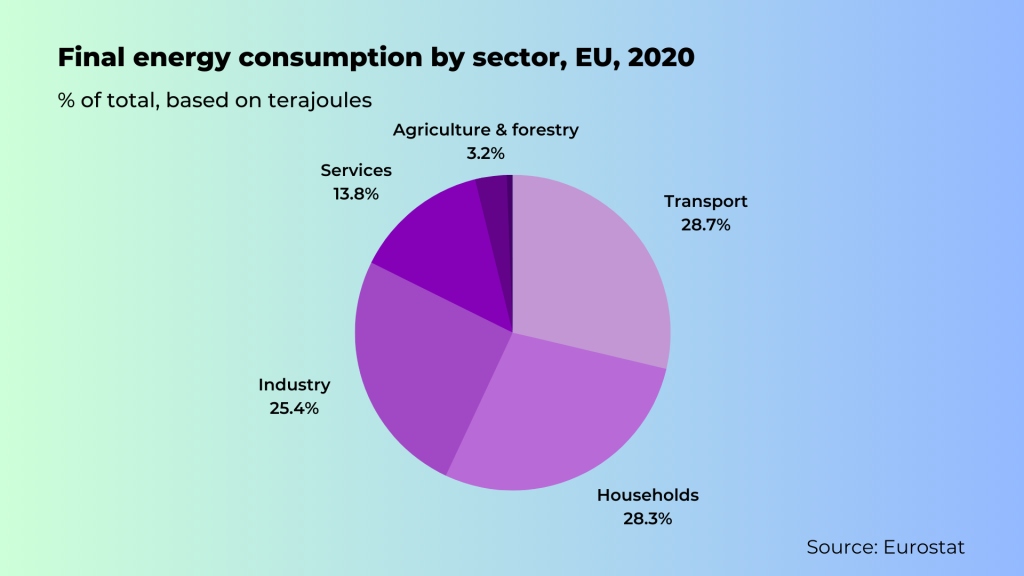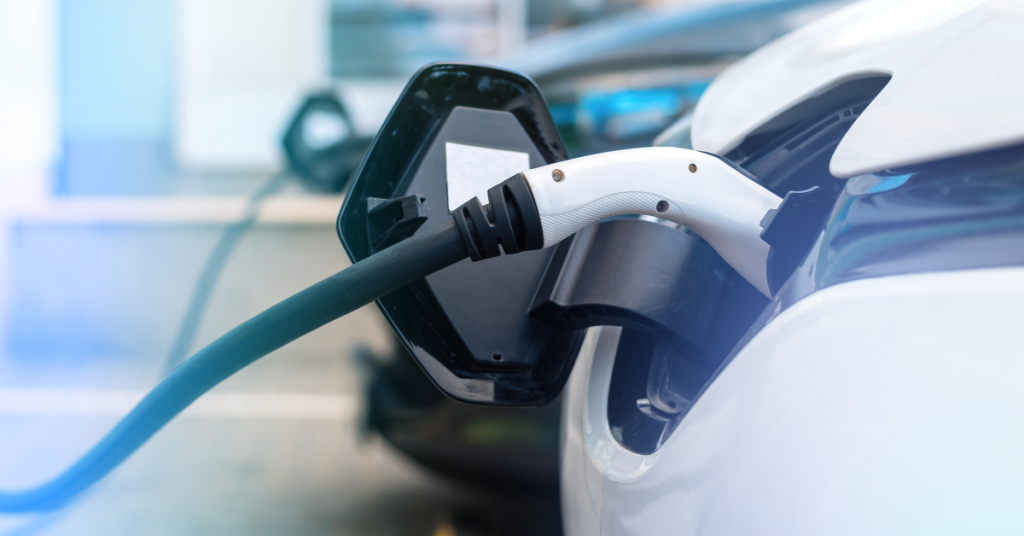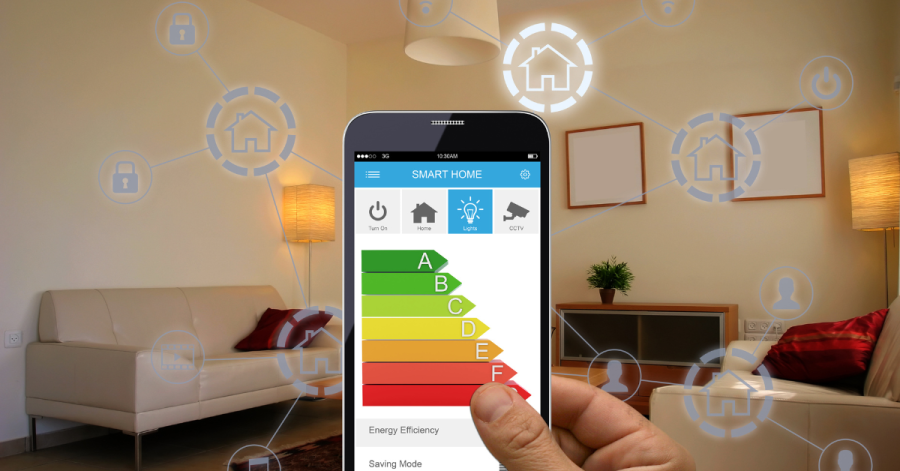Efficiency, the quality of achieving the largest amount of useful work using as few resources as possible, underpins a lot of society’s sustainable development efforts. Energy efficiency, in particular, is an important art to master. It boils down to measures and technologies that allow people and organizations to use less energy while keeping our current systems working at the same levels or better. Among the key benefits of energy efficiency, its proponents highlight cost savings and carbon footprint reduction.
Energy efficiency benefits
Energy efficiency is a hot topic these days for public institutions, companies, and households, and not without reason. There are two main sets of benefits energy efficiency promises by saving energy: contribution to decarbonization, which can be a differentiation factor for public and private organizations, and cost reductions, which translates to a better bottom line.
Decarbonization refers to the reduction in greenhouse gas emissions, particularly carbon dioxide, across the economy, with the goal of reducing and mitigating the effects of climate change on the environment and society.
One of the key contributors to GHG accumulation is energy. In our part of the world, the improvement of energy efficiency is one of the three key pillars in the EU’s plan to combat global warming and climate change by transforming our energy systems. It sits next to increasing renewable energy such as through solar panels and wind power, and lowering greenhouse gas emissions from fossil fuels. As such, EU leaders have set ambitious energy efficiency targets for 2020 and 2030 to decrease primary and final energy consumption.
Pursuing energy efficiency across sectors translates into reducing energy consumption in our activities. This is particularly welcomed across the more energy-intensive sectors of our economy and in the context of a political agenda to reduce the EU’s reliance on external suppliers of energy.
Moreover, across sectors, carbon-intensive fossil fuels such as petroleum, coal, and natural gas are still a major energy source. Fossil fuels remain the major source of energy consumption – in 2020, oil and petroleum accounted for the biggest share (35%), followed by electricity (23.2%), and natural gas (21.9%), according to Eurostat. It follows that by increasing energy efficiency, companies are lowering their carbon footprint, thus positioning themselves as better citizens of society and the environment.
On the other hand, the increase in energy efficiency helps save not only energy but also money. For instance, by using appliances, systems, and practices aimed at reducing energy usage, organizations, as well as households, can save money on their monthly bills. According to the US Department of Energy, such practices can help homeowners save 25% on average on utility bills.
In addition to decarbonization and cost savings, energy efficiency can also contribute to improvements in the quality of life, by creating a healthier and more comfortable indoors environment. Energy-efficient windows and insulation, for instance, can help to keep a comfortable temperature year-round, as well as reduce outside noise and prevent the buildup of moisture. Meanwhile, energy-efficient lighting, by improving the quality of the light used in workplaces and homes, reduces eye strain, preventing headaches and long-term health problems.
How to achieve energy efficiency across sectors

Building energy efficiency and home energy efficiency
Buildings make up around 40% of the EU’s total final energy use, two thirds of which goes to the residential sector, according to the European Commission. The building sector also holds one of the greatest potential for energy savings in the EU, as 75% of building stock is still energy inefficient.
A sustainable building movement is shaping up in European countries wherein energy efficiency practices and technologies play a major role.
One popular way to improve energy efficiency in the building sector is with high-quality insulation. This helps prevent heat loss during winter and heat accumulation during summer, thus reducing the use of energy-intensive heating and cooling systems. Constructors are experimenting with different insulation methods for energy efficiency buildings, from double-glazed windows and air sealing to insulating materials from natural resources such as stone mineral wool and cotton.
Another key strategy for energy savings through energy efficiency is the use of advanced heating and cooling systems. Heat pumps, for instance, are a 2-in-1 heating and cooling system that pulls heat from the cold outdoor aid and transfers it indoors in the winter, and pulls heat out of indoor air during summer. By running only on electricity, they help reduce energy use, and particularly fossil fuel-based energy.
Furthermore, energy management systems such smart thermostats optimize the use of heating and cooling usage by automatically adjusting temperatures to the desired level, thus further reducing energy waste and costs. Although the initial costs of some of these systems can be substantial, the energy savings gained outweigh this spending over time.
Finally, lightning is another area where energy efficiency methods are heavily applied. Aside from more efficient lighting such as LED, the use of IoT systems that manage the use of lights remotely and based on predefined settings, can help reduce energy consumption. Additionally, architects and homeowners are encouraged to maximize the use of natural light through the positioning of the building and windows, in order to reduce the need for artificial lighting.
Energy-efficient transportation, driving, and vehicles

In the EU, the transport sector is the biggest consumer of energy, with a 28.4% share, according to Eurostat. This makes it a key target for improving energy efficiency to reduce carbon dioxide emissions, and thus the greenhouse effect and air pollution.
In aviation, energy efficiency interventions with GHG emissions mitigation potential include the optimisation of the aircraft design and components, mass reduction, as well as propulsion system improvements. Yet the use of alternative fuels such as high-energy density biofuels and low-emission hydrogen synthetic fuels is likely further required to decarbonize the sector. Finally, electrification can also play a niche role in short trips and in airports.
Similarly to aviation, the shipping sector requires a mix of energy efficiency-aimed design of vessels and vessel components, the use of alternative fuels such as low-emission hydrogen, ammonia, and biofuel, and electrification for shorter trips.
When it comes to road transportation, in the EU, the Clean Vehicles Directive follows the low-emission mobility strategy that requires the decarbonization of the transport sector on the path towards zero-emission by 2050. It includes an array of measures that support the shift towards public transport/ shared mobility, which decreases the number of vehicles on the road, and towards clean mobility solutions in public procurement tenders. For instance, light-duty vehicles such as cars or vans are considered “clean” if they limit emissions to 50g/km CO2 and up to 80% of applicable real driving emission (RDE) for NOx and PN, and to 0 from January 1st, 2026 onwards.
In Europe, the adoption of electric mobility solutions is on the rise and includes electric cars, micro-mobility such as e-bikes and e-scooters, and shared mobility such as e-buses and electric options in car sharing services.
Industrial decarbonization and energy efficiency

The second highest consumption of energy in the EU comes from industry (26.1%), Eurostat reports. Specific industrial sectors such as iron and steel, chemicals, cement, and pulp & paper use a particularly high amount of energy. The industry contains a world of infrastructures, practices, technologies, and materials that can be improved in order to generate both environmental impact and economic value.
In industry, the main sources of energy consumption are operational and production processes. Machinery, in general, requires lots of energy. As such, the optimization of industrial processes is one of the most effective ways to improve energy efficiency in this area of the economy.
Companies can, for instance, upgrade equipment and machinery to more energy-efficient technologies to improve productivity and energy use. Drones that provide autonomous inspection of wind turbines, for instance, present on solution for the energy sector. They can also recover heat from waste derived from industrial processes.
Another technology-based optimization strategy is the use of energy management systems that can help monitor and optimize energy consumption. Such systems analyze data to identify areas where energy waste can be reduced and provide actionable insights. They can further use smart sensors and automation to help control the use of energy such as in lighting, heating, and cooling.








